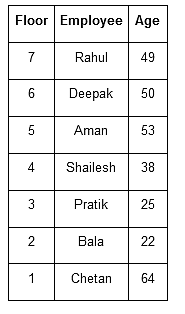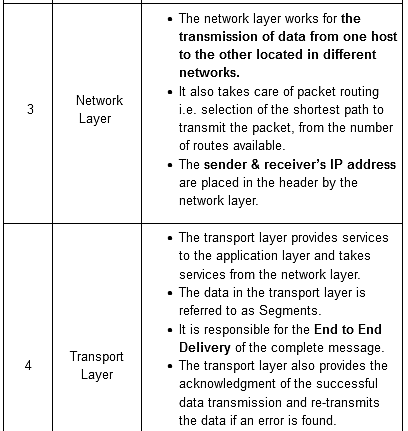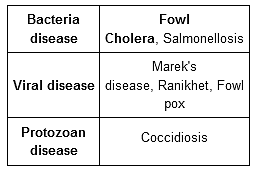NABARD Assistant Manager Grade 'A' Mock Test - 2 - Bank Exams MCQ
30 Questions MCQ Test - NABARD Assistant Manager Grade 'A' Mock Test - 2
Direction: Read the following information carefully and answer the given questions
There are seven employees Aman, Bala, Chetan, Pratik, Deepak, Rahul and Shailesh. They live on seven different floors of a building. The Lowermost floor is numbered as 1 and the topmost floor is numbered as seven. They are of different age i.e. 22, 49, 64, 25, 38, 50 and 53 but not necessarily in the same order. Deepak is three years younger than Aman. Pratik lives immediately below the one who is 38 years old and his age is perfect square as well as divisible by 5. Rahul lives on an odd-numbered floor and his age is a perfect square. Shailesh who is the third youngest person lives on the fourth floor. Deepak lives just above Aman but not on the second floor. Chetan lives on an odd-numbered floor and his age is a perfect cube. Aman does not live on an even number floor. The one who is the oldest does not live on the top floor.
Q. Who among the following is the second oldest employee?
Study the following information carefully and answer the below questions.
Eight people are A, B, C, D, E, F, G, and H living in a building which has four floors numbered as 1 to 4 from bottom to top. Each floor has two flat 1 and flat 2, where flat 2 is to the east of flat 1. Only one person is living in each flat of the building but not necessarily in the same order.
E lives on an even numbered floor but not in an even numbered flat. D lives two floors above F. Neither A nor H lives on the same floor. B doesn’t live on the same floor of G. A lives northwest of F who lives immediately below H. C lives one of the floors above E. Only one person lives between E and G both are living on the same numbered flat.
Q. Which of the following statement(s) is/are true with respect to A?
I. A lives west of D
II. A lives on an odd numbered floor
III. A lives on the same floor of E
| 1 Crore+ students have signed up on EduRev. Have you? Download the App |
Read the following passage carefully and answer the questions given below it. Certain words/ Phrases have been printed in bold to help you locate them while answering some of the questions.
Economists have spent most of the 20th century ignoring psychology, positive or otherwise. But today there is a great deal of emphasis on how happiness can shape global economies, or — on a smaller scale — successful business practice. This is driven, in part, by a trend in "measuring" positive emotions, mostly so they can be optimized. Neuroscientists, for example, claim to be able to locate specific emotions, such as happiness or disappointment, in particular areas of the brain. Wearable technologies, such as Spire, offer data-driven advice on how to reduce stress.
We are no longer just dealing with "happiness" in a philosophical or romantic sense — it has become something that can be monitored and measured, including by our behavior, use of social media and bodily indicators such as pulse rate and facial expressions.
There is nothing automatically sinister about this trend. But it is disquieting that the businesses and experts driving the quantification of happiness claim to have our best interests at heart, often concealing their own agendas in the process. In the workplace, happy workers are viewed as a "win-win." Work becomes more pleasant, and employees, more productive. But this is now being pursued through the use of performance-evaluating wearable technology, such as Humanyze or Virgin Pulse, both of which monitor physical signs of stress and activity toward the goal of increasing productivity.
Cities such as Dubai, which has pledged to become the "happiest city in the world," dream up ever-more elaborate and intrusive ways of collecting data on well-being — to the point where there is now talk of using CCTV cameras to monitor facial expressions in public spaces. New ways of detecting emotions are hitting the market all the time: One company, Beyond Verbal, aims to calculate moods conveyed in a phone conversation, potentially without the knowledge of at least one of the participants. And Facebook [has] demonstrated . . . that it could influence our emotions through tweaking our news feeds — opening the door to ever-more targeted manipulation in advertising and influence.
As the science grows more sophisticated and technologies become more intimate with our thoughts and bodies, a clear trend is emerging. Where happiness indicators were once used as a basis to reform society, challenging the obsession with money that G.D.P. measurement entrenches, they are increasingly used as a basis to transform or discipline individuals.
Happiness becomes a personal project, that each of us must now work on, like going to the gym. Since the 1970s, depression has come to be viewed as a cognitive or neurological defect in the individual, and never a consequence of circumstances. All of this simply escalates the sense of responsibility each of us feels for our own feelings, and with it, the sense of failure when things go badly. A society that deliberately removed certain sources of misery, such as precarious and exploitative employment, may well be a happier one. But we won't get there by making this single, often fleeting emotion, the over-arching goal.
Q. According to the author, Dubai:
(A) develops sophisticated technologies to monitor its inhabitants’ states of mind.
(B) incentivises companies that prioritise worker welfare.
(C) is on its way to becoming one of the world’s happiest cities.
In the following passage, some of the words have been made bold, each of which is preceded by a number. Find the suitable word from the options given below that could replace the bold word so as to make the paragraph meaningful.
The National Stock Exchange (NSE), the country's largest equities and derivatives exchange, was earlier this month fined for laxity in governance ________ (1) ________ (making) to actions taken during the tenure of its former MD and CEO Chitra Ramkrishna. Markets regulator SEBI _________ (2) _______ (rolls out) a 190-page order sanctioning the NSE, Ms. Ramkrishna, her predecessor Ravi Narain and a former Group Operating Officer Anand Subramanian, whose ________ (3) ________ (persistence) by Ms. Ramkrishna was the primary matter under investigation, and _________ (4) __________ (related) financial penalties on each of them. However, the regulator too has come under a cloud for not acting quickly enough on the complaints it had received against the NSE management and on forensic audit reports that had shown irregularities in Ms. Ramkrishna’s _________ (5) _________ (weaving) of her professional duties. In setting the context for its order, SEBI noted that the NSE was a systemically important market infrastructure institution (MII).
Q. Fill in blank 1 with the appropriate word. If the word in bold is appropriate, mark option 5 ‘No replacement required’ as the answer.
Read each sentence to find out whether there is any error in it. The error, if any, will be in one part of the sentence. Mark the part with the error as your answer. If there is no error, mark "No Error" as your answer. (Ignore the errors of punctuation, if any).
Many studies have pointed out that (A) / babies born via C-section have (B) / less bacterial exposure, which in turn alterates (C) / their immunity and gut microbiome diversity. (D) / No Error (E)
In the question given below, three sentences are given, each of which has two words highlighted in bold. Choose the word in each sentence that fits appropriately in the context, and select the right option.
1. We must (A)prey/(B)pray to the Almighty for forgiveness.
2. Jeans are (A)popular/(B)populous among the young.
3. The government was determined to (A)precede/(B)proceed with the election.
In Computer network, What does OSI stands for?
In the context of decision making biases, is the overreliance on an initial single piece of information or experience to make subsequent judgments?
Which of the following is not a feature of a strategic decision?
When an individual takes decision as an executive in the official capacity, it is known as ____________ decision.
In which Indian state was the rare golden tiger recently spotted?
With whom did SIDBI collaborate to introduce the 'Sumpoorn' MSME Economic Activity Index?
Which of the following is the major objective of Rashtriya Gram Swaraj Abhiyan?
Which organization, in collaboration with Lockheed Martin, recently unveiled the X-59 supersonic jet, capable of speeds up to 925 mph and designed to produce quieter sonic booms, redefining supersonic travel?
With a vision to make India an energy-independent nation, and to de-carbonise critical sectors, the Government approved the National Green Hydrogen Mission on January 4, 2023 with an initial outlay of ________.
The total net value of all goods and services produced within a nation over a specified period of time, representing the sum of wages, profits, rents, interest, and pension payments to residents of the nation is called_______.
In which category has Nisha Pahuja's film 'To Kill a Tiger' been nominated for the Oscars 2024?
With reference to the National Monetisation pipeline (NMP), consider the following statements.
It is an effort to list out the government’s infrastructure assets to be sold over the next four years.
Currently, only assets of central government line ministries and CPSEs in infrastructure sectors have been included.
Monetization through disinvestment and monetization of non-core assets is also included in the NMP.
Q. Which of the statements given above is/are correct?
Who inaugurated the 'Unmesha' International Literature Festival and the 'Utkarsh' Festival of Folk and Tribal Performing Arts in Bhopal, Madhya Pradesh?
What was Namdeo Dhondo Mahanor best known for?
What is the purpose of the newly introduced Ayush (AY) visa category by the Ministry of Home Affairs?
What is the primary objective of the partnership between Axis Bank and Kiwi in offering lifetime free Axis Bank KWIK virtual credit cards through the Kiwi app?
What significant achievement has recently been recorded at the Assam State Zoo?
Which of the following is an example of a bacterial disease of poultry?
The Union Ministry of Rural Development will launch Aajeevika Grameen Express Yojana (AGEY), a sub-scheme under _______
"Rythu Bandhu Scheme" is launched by which of the following state?
Desert Soils are classified under____
Under Pradhan Mantri Fasal Bima Yojana (PMFBY), What is the Premium % for Kharif crops?
National Agriculture Market (e-NAM) is developed by ________




























